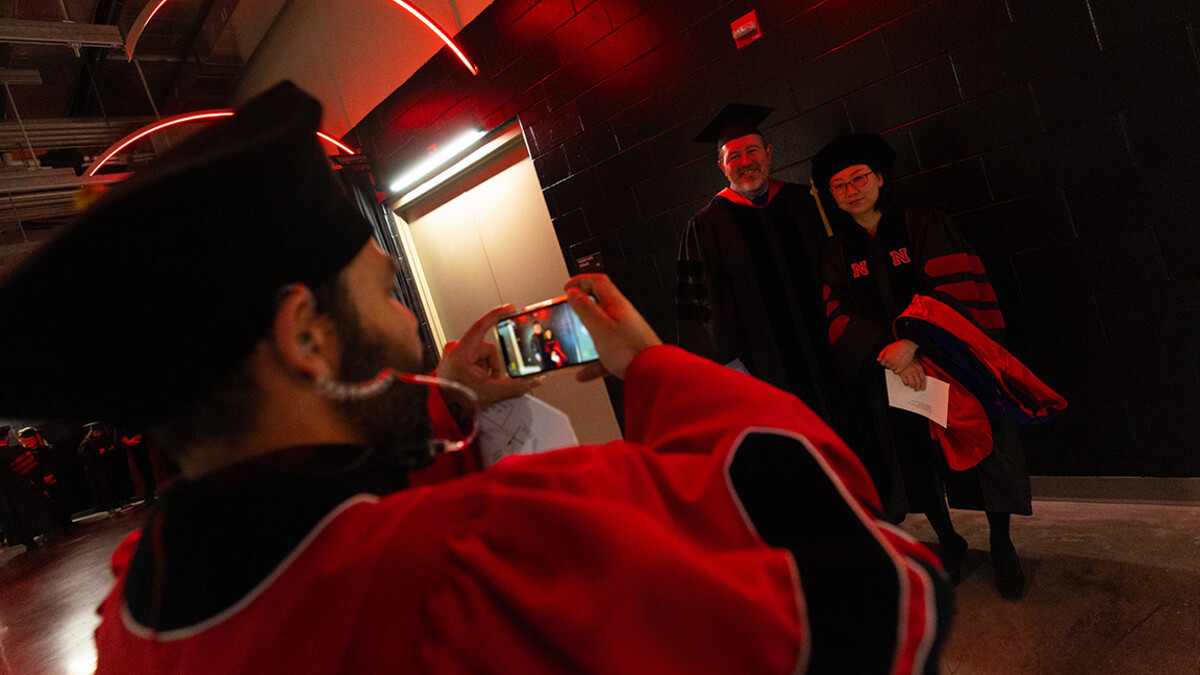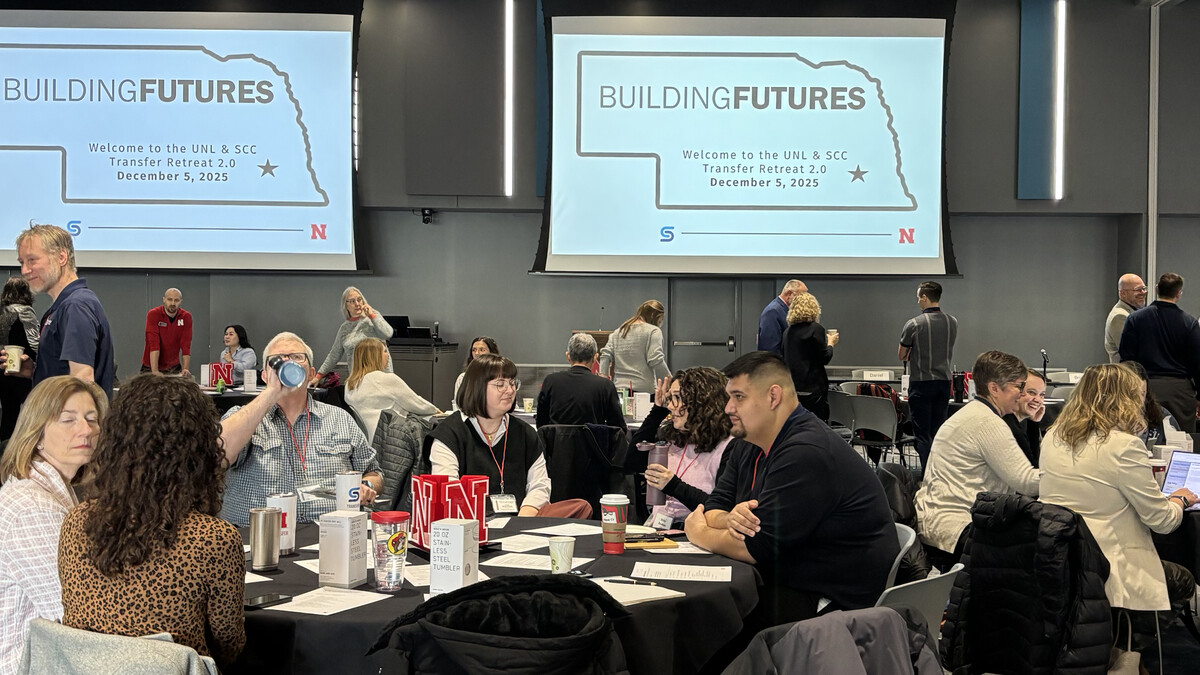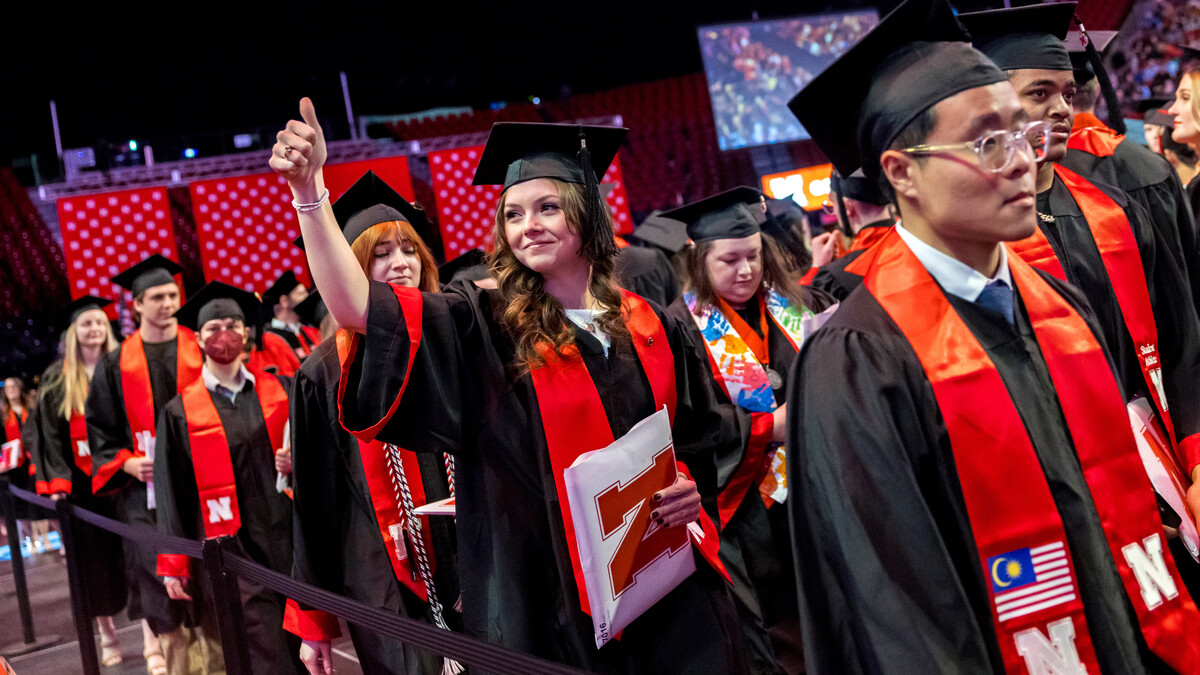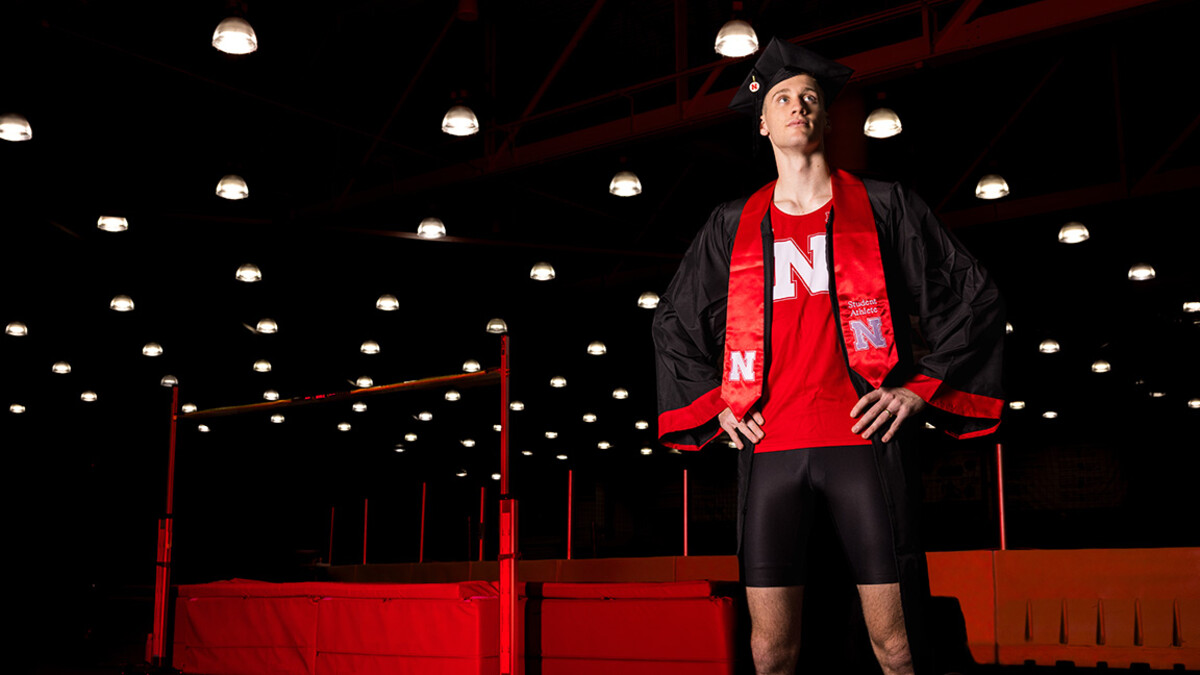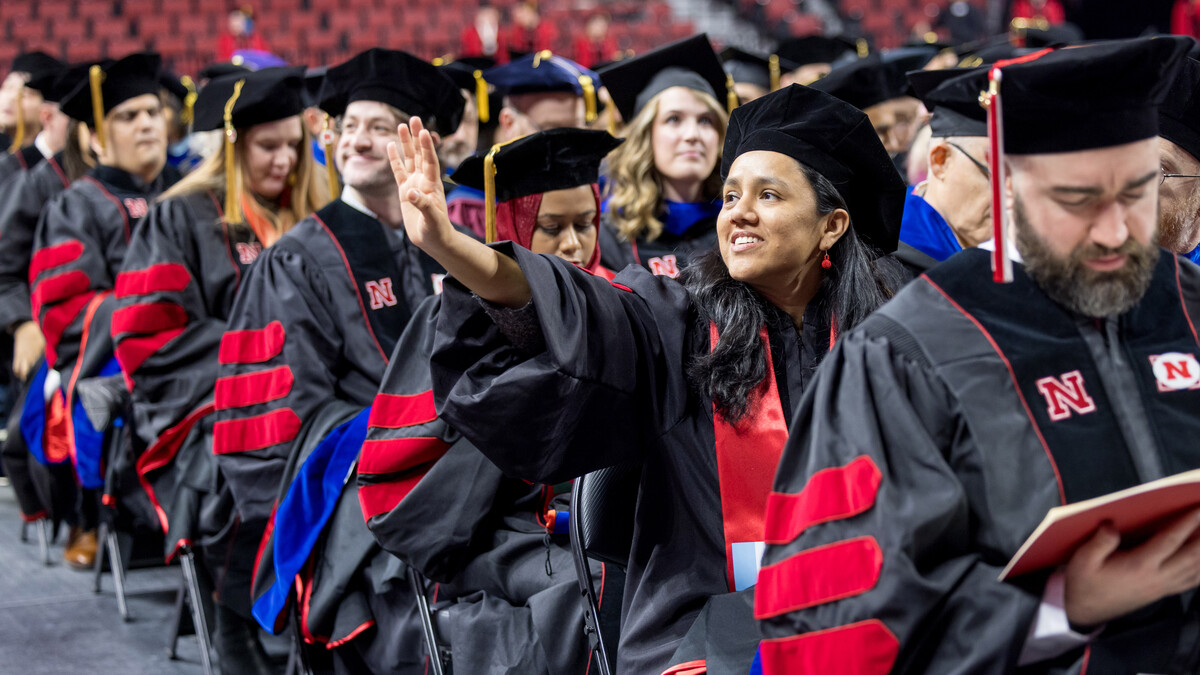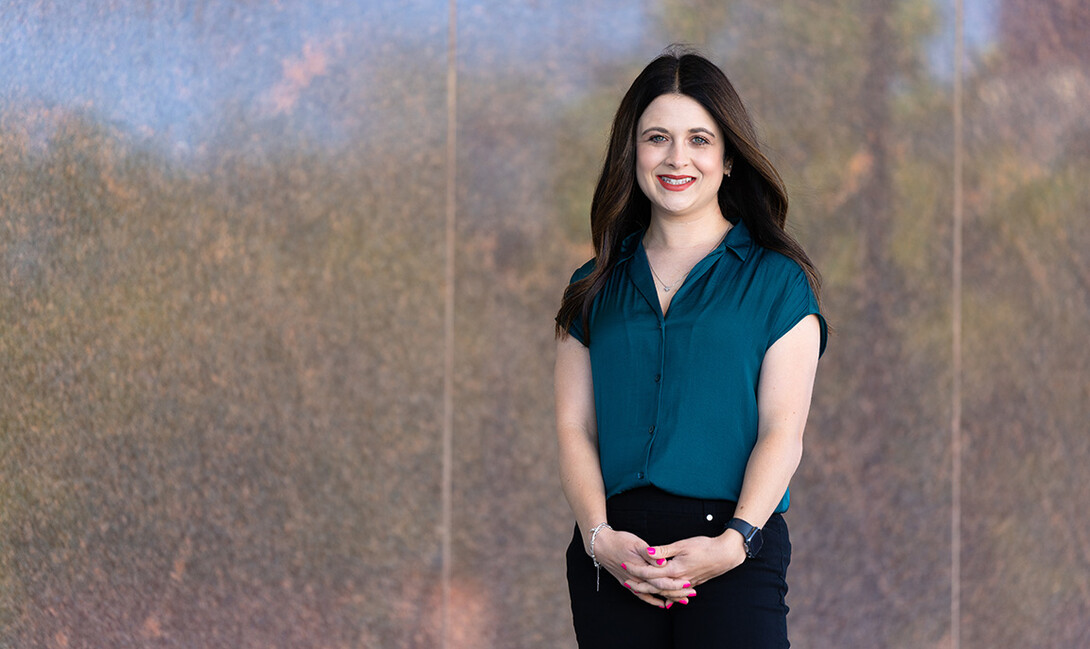
Liz McCue | University Communication and Marketing
Liz McCue | University Communication and Marketing
Ciera Kirkpatrick recently published a study showing that knowledge-based messages are best when health professionals use short-form videos to encourage cervical cancer screening.
University of Nebraska–Lincoln research on short-form video messaging and synthetic skins was featured in national media outlets in June. The stories were among 35-plus national news stories featuring Husker faculty, staff, students, centers and programs during the month.

Kristen Labadie | University Communication and Marketing
- A new study co-authored by Ciera Kirkpatrick, assistant professor of advertising and public relations at Nebraska, and LaRissa Lawrie, a doctoral candidate at the University of Missouri, suggests that knowledge-based messages are best when health professionals use short-form videos to encourage cervical cancer screening. Articles on the research appeared in Contemporary OB/GYN, Medical Xpress and The Munich Eye.
- Taking a cue from ocean-dwelling species, Stephin Morin, associate professor of chemistry, and colleagues are developing synthetic skins that will support the emergence of next-generation “soft” machines, robots and other devices. The skins closely approximate the mechanical action of the chromatophores found in cephalopods — squids, octopi, cuttlefish and other species. Articles on the research appeared in Interesting Engineering, Phys.org, Scienmag and Sustainability Times.
Additional national news coverage in June included:
- Alice J. Kang, political science and ethnic studies, co-wrote a June 3 piece for The Conversation on the lack of female political leaders in Nigeria shaping children’s views. “Our finding that children largely see politics as a ‘man’s world’ prompts reflection on societal and political biases,” the co-authors wrote. “To address the under-representation of women in political leadership positions in Nigeria, it is important to invest in civic education programs.”
- Katherine Bogen, a doctoral student in psychology at Nebraska, was interviewed for a June 4 New York Times article on disappearing federal funding for medical research. She had been studying post-traumatic stress, alcohol use and intimate partner violence against bisexual women until her National Institutes of Health grant was terminated in March. Bogen was also featured in the June 26 episode of the Times podcast “The Daily.”
- A Nebraska Engineering team is another step closer to developing soft robotics and wearable systems that mimic the ability of human and plant skin to detect and self-heal injuries. The team includes Eric Markvicka, mechanical and materials engineering, and graduate students Ethan Krings and Patrick McManigal. Stories on the research appeared in KLKN, KOLN/KGIN, Bioengineer.org, Impact Lab, Interesting Engineering, ScienceDaily, Scienmag, Sustainability Times and 25-plus other media outlets.
- An international panel chaired by Craig Allen, School of Natural Resources, is pointing to the crucial benefits forests provide and calling on countries to adopt well-informed resilience strategies. Forbes published a June 5 article on the panel’s report. The article was picked up by several other media outlets. High Plains Journal published a similar article June 25.
- The U.S. Drought Monitor — produced jointly by the university’s National Drought Mitigation Center, the National Oceanic and Atmospheric Administration and the U.S. Department of Agriculture — was cited in a June 5 Lincoln Journal Star article on drought conditions in Nebraska. About 85% of the state was under some kind of drought conditions, according to the monitor, with about 35% in severe drought. Eric Hunt, a climatologist with Nebraska Extension, was also interviewed for the article. The High Plains Journal and Rural Radio Network published similar stories.
- Byron D. Chaves, food science and technology, was interviewed for a June 10 Newsweek article on a recent recall of Comvita honey products over improperly fitting induction seals. “If an induction seal isn’t properly applied, it can lead to leaks, contamination and reduced shelf life,” he said. “It also means the package may not show evident signs of tampering, which can raise safety concerns. In some cases, it could lead to regulatory issues or loss of consumer trust if the product appears unsafe or poorly sealed.”
- A series of electric vehicle crash tests conducted by the university’s Midwest Roadside Safety Facility was featured in a June 11 video story by The Drive. The first-of-their-kind tests suggest that current guardrails and traffic barriers are ill-equipped to handle electric vehicles, which tend to be heavier and have a lower center of gravity than their gas-powered counterparts. Cody Stolle, MwRSF research assistant professor, was interviewed for the story.
- The University of Nebraska’s Daugherty Water for Food Global Institute and the University of Nebraska–Lincoln’s Clayton Yeutter Institute of International Trade and Finance partnered to provide four Yeutter Student Fellows — Zanib Al Razaq, Lexi Bodlak, Matthew Gillespie and Ethan Zenwith — an immersive spring break trip to Ghana, The Fence Post reported June 15. The fellows have been tasked with researching how an irrigation company could best position itself to help meet the irrigation needs of the African continent.
- Colleen E. Medill, law, was interviewed for a June 18 Bloomberg Law article on the Advisory Council on Employee Welfare and Pension Benefit Plans being put on an indefinite pause. The external input the council provides is “invaluable” to agency officials who spend their time holed up in Washington office buildings, she said.
- Filmmaker Magazine published a June 18 article on the emerging media arts program. Megan Elliott, Johnny Carson Endowed Director of the program, and Jesse Reding Fleming and Ash Eliza Smith, faculty members, were interviewed.
- Recent facility improvements at the University of Nebraska–Lincoln have given a boost to the university’s swine research, critical to the state’s industry and efforts to feed a growing global population, Rural Radio Network and National Hog Farmer reported. New gate feeders in the “pig room” of the Animal Science Complex, funded by the Nebraska Pork Producers Association, were installed in late winter to provide more space for research.
- Rob Eirich, director of Beef Quality Assurance and Nebraska Extension educator, was interviewed for a June 19 Progressive Farmer article on caring for cattle during extreme heat. Airflow in feedlot pens, shade, sprinklers and access to water are all important in limiting heat stress to cattle, Eirich said. He recommended processing cattle before 10 a.m. on hot days.
- Researchers from the University of Nebraska–Lincoln and Texas A&M University have engineered a self-sustaining system that uses cyanobacteria and fungi to create strong building materials using only Mars-like soil, air, light and water. The team includes Huskers Nisha Rokaya, doctoral student in plant pathology; Erin Carr, postdoctoral research associate in chemical and biomolecular engineering; and Richard A. Wilson, Charles Bessey Professor of plant pathology. Articles on the research appeared in 3D Printing Industry, The Daily Galaxy, The Debrief, Study Finds and Universe Today.
- Scientists have successfully engineered the oilseed crop Camelina sativa to produce high levels of astaxanthin — a valuable red antioxidant used to color farmed salmon and shrimp — using plant-derived genes rather than bacterial pathways. The team of biotechnologists from the United States and United Kingdom was led by Edgar Cahoon, biochemistry, director of the Center for Plant Science Innovation at Nebraska. Food Technology and Manufacturing published a June 26 article on the research.
- The University of Nebraska system landed among the top 100 universities with the most U.S. utility patents granted in the 2024 calendar year, Silicon Prairie News reported June 26. NU’s 47 patents ranked No. 49 in the U.S. and No. 82 in the world, according to the list compiled by the National Academy of Inventors. Thirty-six patents were awarded to projects led by Husker researchers.
- Santosh Pitla, biological systems engineering, was interviewed for a June 30 Iowa Public Radio story on the fourth annual CyberTractor Challenge, held recently at Iowa State University. A large-scale cyberattack during the narrow windows for planting and harvesting could hurt on-farm incomes and state economies that rely heavily on agriculture, he said.
